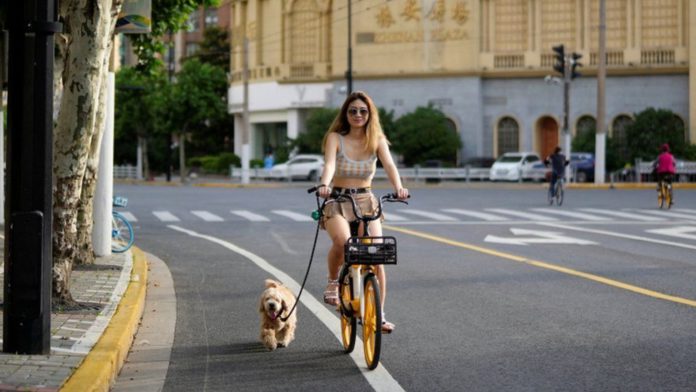The Chinese city of Shanghai, the country’s economic centre and a global trade hub, has eased Covid curbs after a two-month lockdown.
At midnight local time (16:00 GMT Tuesday), restrictions were relaxed to allow most people to move freely around the city of some 25 million people.
But at least 650,000 residents will remain confined to their homes.
China’s overall policy of “zero Covid” remains in place and people catching Covid face quarantine or hospital.
Their close contacts also face the prospect of removal to quarantine and the area immediately around where they live being locked down again.
“This is a day that we dreamed of for a very long time,” Shanghai government spokeswoman Yin Xin told reporters.
“Everyone has sacrificed a lot. This day has been hard-won and we need to cherish and protect it, and welcome back the Shanghai we are familiar with and missed.”
But there are new rules too: residents are required to show a green health code on their smartphone to leave their home compounds or buildings and access most places; those who want to use public transport or go to the banks, malls etc must have a negative PCR test certificate valid in the last 72 hours; and restrictions on leaving Shanghai remain, with anyone travelling to another city facing quarantine of 7-14 days on their return.
But that didn’t stem the relief people felt.
Cheers and sounds of jubilation rose as the clock struck midnight on Tuesday, signalling the end of the lockdown. Groups of Shanghai residents gathered on street corners, singing and toasting with drinks as they welcomed their newfound freedom.
“We were locked down too many days. We need to celebrate. Not just me – all the Shanghai people here,” one resident told the BBC. “All the bad things [have] gone past, so tomorrow will be fine.”
“We are free. I am so happy, I want to work. I want to work tomorrow,” said another.
The lockdown has seen many residents lose income, struggle to find enough food and cope mentally with prolonged isolation.
Manufacturers including Western car makers Volkswagen and Tesla have been particularly impacted by the restrictions as staff were kept away from factories or had to work in “closed loop” conditions, where they lived at the plants.
On Wednesday, cautious signs of life appeared to be returning to the city. Men in buttoned down shirts walked into flashy office towers – but not in the same numbers as before the outbreak, with many firms enforcing a staggered return to work.
Joggers, cyclists, skaters and dog walkers defied the muggy heat to take over riverfront parks for a much-awaited breath of fresh air.
A basic service resumed on public transport, and shops opened with larger ones operating at 75% capacity. Cinemas, museums and gyms remain closed. Most children will also not return to face-to-face schooling.
The city also has a 50-point plan aimed at revitalising its economy, which before the lockdown was worth more than $600bn (£475bn). The new measures include reducing some taxes for car buyers, speeding up the issuance of local government bonds and fast-tracking approvals of building projects.

